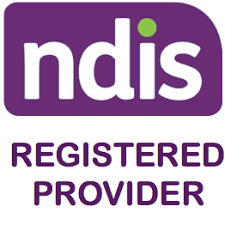Apps
Definition of Developmental Coordination Disorder
Developmental Coordination disorder (DCD) is also referred to as Dyspraxia and is defined as a disorder which affects a wide range of sensory or motor skills, encompassing both movement and coordination.
DCD is present across the lifetime, with symptoms first emerging in childhood. DCD can also co-occur with other diagnosis, particularly Autism Spectrum Disorder, Attention Deficit Hyperactivity Disorder and Dyslexia. According to the DSM-V, the following diagnostic criteria apply:
A. The acquisition and execution of coordinated motor skills is substantially below that expected given the individual’s chronological age and opportunity for skill learning and use. Difficulties are manifested as clumsiness (e.g., dropping or bumping into objects) as well as slowness and inaccuracy of performance of motor skills (e.g., catching an object, using scissors or cutlery, handwriting, riding a bike, or participating in sports).
B. The motor skills deficit in Criterion A significantly and persistently interferes with activities of daily living appropriate to chronological age (e.g., self-care and self-maintenance) and impacts academic/school productivity, prevocational and vocational activities, leisure, and play.
C. Onset of symptoms is in the early developmental period.
D. The motor skills deficits are not better explained by intellectual disability (intellectual developmental disorder) or visual impairment and are not attributable to a neurological condition affecting movement (e.g., cerebral palsy, muscular dystrophy, degenerative disorder).
Types of DCD
The difficulties associated with DCD are multi-factorial and can affect a range of everyday living skills, impacting education, extra-curricular activities and employment.
The manner in which DCD affects individuals may change across the lifespan dependent upon environmental demands.
At the point of diagnosis, the individual will be categorized depending upon their score on a standardized motor skills test such as the Movement Assessment Battery for Children as follows:
- Moderate DCD (m-DCD): All DSM 5 criteria are described and met. Children score 1–1.64 standard deviations below the mean on a validated motor test (between 15 and 6th percentile).
- Severe DCD (s-DCD): All DSM V criteria are described and met. Children score at least 1.64 standard deviation below the mean on a validated motor test (at or below 6th percentile).
- Probable DCD (p-DCD):DSM 5 criteria are described, but one or more criteria may not have been evaluated. For example, there is no parent report on ADL, or there is no information available on criterion C or D. Children in p-DCD score at least 1 standard deviation below the mean on validated motor test (at or below 16th percentile). Moreover, if based on the child’s history, there has been insufficient exposure to skill learning, the child will also be classified as p-DCD. After the opportunity has been given to learn the specific skill over a short period of time, sufficient progress needs to be demonstrated otherwise, depending on the motor score the condition would be categorized as s-DCD or m-DCD.
- At risk for DCD: All DSM 5 criteria are described and met, and children are under 5 year of age. If a later repeated motor test and evaluation confirms that all criteria are met, the diagnosis DCD will be given.
NOTE: The term Developmental Verbal Dyspraxia specifically refers to motor difficulties making and co-ordinating the precise movements required for the production of clear speech, in the absence of nerve or muscle damage.
Causes of DCD
There is no consensus on the cause of DCD, however, several theories have been proposed, including:
- Atypical brain development. This theory has limited evidence and research has largely failed to identify a specific area of the brain which is universally affected in those with DCD diagnosis. Overall, it is hypothesized that the atypical brain development present in those with DCD is diffuse, however more research is required to form a consistent conclusion with regard to this theory.
- Deficits in attention, motor control and perception (DAMP) hypothesis. Research has proposed a relationship between attention difficulties, DCD and perceptual difficulties. The manner in which these challenges co-occur has led to a theory of DAMP as a diagnostic label rather than focusing on discrete and/or co-existing disorders. No conclusive evidence for this has yet been demonstrated.
- Automatisation deficit hypothesis. Although this theory does not address DCD specifically, it does account for motor difficulties for those who have a diagnosis of dyslexia. Despite the lack of specificity, the automatisation deficit hypothesis demonstrates causal factors for coexisting developmental problems which require the ability to carry out tasks automatically e.g., DCD, Dyslexia and ADHD. Much like the atypical brain development and DAMP hypothesis, there is no evidence to prove or disprove this theory specifically for DCD.
Symptoms of DCD
Symptoms of DCD broadly fall into the diagnostic categories as stated above, however, some examples are:
- Clumsiness
- Poor coordination
- Difficulty tying shoelaces
- Forgetfulness
- Handwriting difficulties
- Difficulty sitting on a chair
- Sensory sensitivities
- Delayed processing
- Difficulties sequencing
- Poor sense of direction
- Generally untidy and disorganised
These symptoms can cause the individual to avoid tasks or pariticipate in activities they find difficult. The indivdiual may have difficulty making friends and be bullied due to their differences. The resulting frustration can impact their self esteem and contribute to emotional and behavioural difficulties.
Behaviour Help
If you are supporting an individual with this diagnosis, please refer to our services and resources. They aim to help children, adolescents and adults achieve better communication, social, emotional, behavioural and learning outcomes. So, whether you are wanting guidance on parenting, teaching, supporting or providing therapy, Behaviour Help is at hand.
Note: This is not an exhaustive list of all the possible causes, symptoms and types but some general information that can be further explored. Based on what you have read, if you have any concerns about an individual, please raise them with the individual/s caregivers. The caregiver can then raise these concerns with their local doctor who can provide a referral to the relevant professional (e.g. paediatrician, psychologist, psychiatrist, allied health professional and learning specialists) for diagnosis and treatment if appropriate.
References
American Psychiatric Association Diagnostic and statistical manual of mental disorder (5th ed.), American Psychiatric Association, Arlington, AV (2013).
Dewey, D. and Wilson, B.N., 2001. Developmental coordination disorder: What is it?. Physical & occupational therapy in pediatrics, 20(2-3), pp.5-27.
Visser, J., 2003. Developmental coordination disorder: a review of research on subtypes and comorbidities. Human movement science, 22(4-5), pp.479-493.
Behaviour Help
If you are supporting an individual with this diagnosis, please refer to our services and resources. They aim to help children, adolescents and adults achieve better communication, social, emotional, behavioural and learning outcomes. So whether you are wanting guidance on parenting, teaching, supporting or providing therapy, Behaviour Help is at hand.
Note: This is not an exhaustive list of all the possible causes, symptoms and types but some general information that can be further explored. Based on what you have read if you have any concerns about an individual, please raise them with the individual/s. The caregiver can then raise these concerns with their local doctor who can provide a referral to the relevant professional (e.g. paediatrician, psychologist, psychiatrist, allied health professional and learning specialists) for diagnosis and treatment if appropriate.
Get Started with Behaviour Help App
Assess-manage-prevent behaviours of concern efficiently and effectively with the Behaviour Help App.

